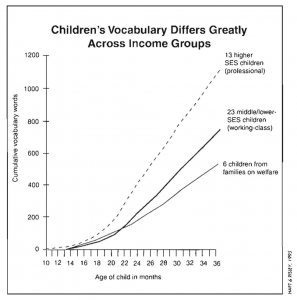As behavior analysts, we think of language as a special type of behavior that involves an interaction between a speaker and a listener. Skinner (1957) defined verbal behavior as “behavior reinforced through the mediation of other persons [who] must be responding in ways which have been conditioned precisely in order to reinforce the behavior of the speaker” (p. 2, p. 225). In a paper published in 2001, Drs. Mark Sundberg and Jack Michael outlined the benefits of Skinner’s Analysis of Verbal Behavior for Children with Autism. This article helped bridge the gap between conceptual analysis and practice for clinicians providing services to learners diagnosed with autism and related disorders. It also laid the groundwork for what is now a large body of research demonstrating the practical utility of incorporating a verbal behavior approach to our clinical work with this population. It is critically important that we attend to this body of knowledge, and I will use this blog as a means of highlighting recent advances in this area of study.
My goal for the blog is to illustrate how ‘Verbal Behavior Matters’ to virtually all applications of behavior analysis (including my own self-editing of this post). To this end, I will feature guest bloggers, interviews with scholars conducting research in verbal behavior, review recent research, discuss seminal studies, share relevant news articles, and highlight research published in non-behavior analytic journals.

In this first post, I want to highlight the seminal work of Drs. Betty Hart and Todd Risley, Meaningful Differences in the Everyday Experiences of Young American Children (1995). This research has received attention in several news media outlets in recent years. Their book summarizes the results of two and half years of observations that were conducted in the homes of 42 families from three different socioeconomic status (SES; “families on welfare” “working-class” and “professional”) from Kansas. A team of researchers conducted these observations and recorded verbal interactions between caregivers and their children from age 7 months to 3 years old. The data were summarized to include everything that was said directly to the child, everything that the child overheard (even if the talk was not directed at them), and everything the child did and said during these timed observations. The team coded data on several variables including positive and negative interactions between the caregiver and child, the number of directives given by adults, and the number of conversational turns. The finding that has received the most attention is the clear and strong correlation that was demonstrated between SES and the number of words a child heard by their fourth birthday. Specifically, children from a low SES background heard 30 million fewer words than their high SES counterparts (Hart & Risley, 1995).

These groundbreaking results demonstrate a clear connection between the size of a child’s vocabulary and their experienced verbal interactions. However, the most important finding of Hart and Risley’s research demonstrates that how we engage children in back-and-forth exchanges from a very young age, and not just how much we talk to them is critical element in shaping their early language development. This relationship is important to note because problems with acquisition of verbal behavior may sometimes be misattributed to inherent language learning difficulties. Researchers from Juniper Gardens Children’s Project have continued this line of research. The evidence from this body of work is clear – we should be talking to and with our babies!
Dr. Martha Peláez’s research with infants has clearly demonstrated the effectiveness of contingent social reinforcement on the emission of early social responses (e.g., vocalizations and joint attention) in infants. One of her most recent studies on this topic reminds us that these early social responses (i.e., eye gaze, joint attention, social referencing, etc.) may be pre-requisites to establishing more advanced verbal behavior. An important avenue for future research would be to consider how these empirically validated procedures can be taught to parents and childcare providers to help promote critical learning skills in infants under their care. It would be especially advantageous to apply this work to children who are at-risk for language delays (e.g., those living in poverty). Given that about 15 million children in the United States live below the federal poverty threshold, it is imperative that we act with a sense of urgency.

One example of a large-scale program that has demonstrated success and is based on the work of Hart and Risley is the Thirty Million Words® Initiative (TMW). This program is designed to: 1) make parents aware of the importance of language stimulation, and 2) teach them how to create a positive language-rich environment for their children. In a recent issue of Behavioural Public Policy, the Founder of TMW Initiative, Dr. Suskind and her colleagues, give a compelling argument for combining behavioral economics and field experiments to reimagine early childhood education. As behavior analysts, we should all advocate for public policy to direct funding towards evidence-based programs that begin the day a child is born.
In a next installment of ‘Verbal Behavior Matters’ I will highlight research on second language acquisition and considerations behavior analysts should take in their work with bilingual learners with autism. Stay tuned!
